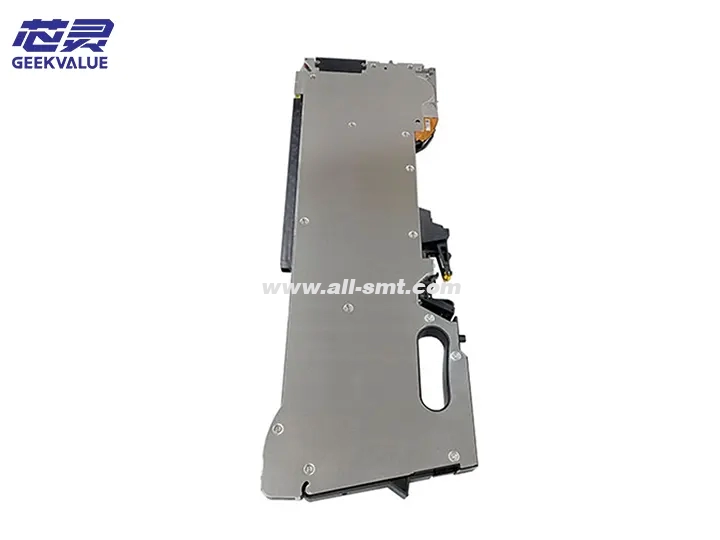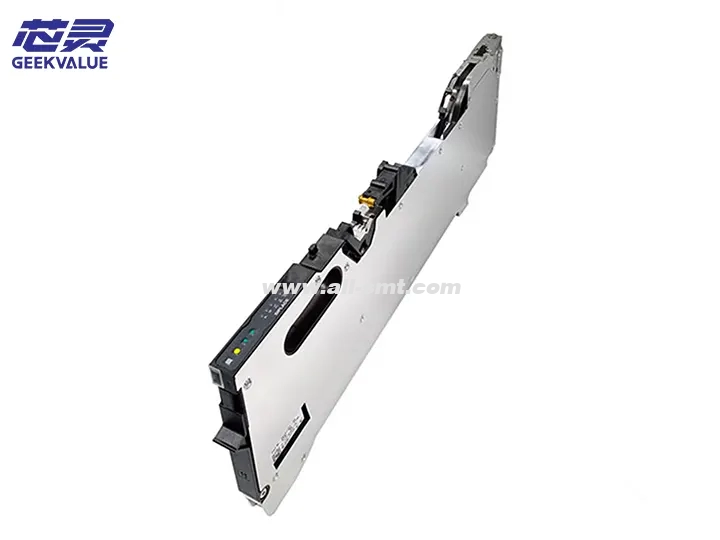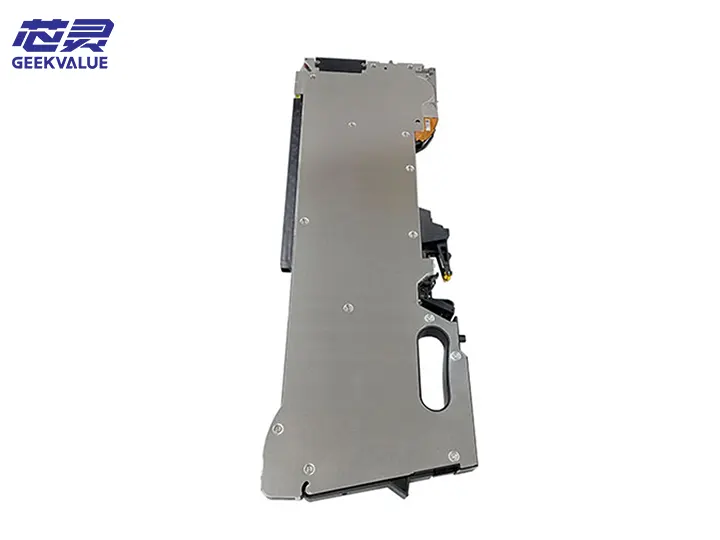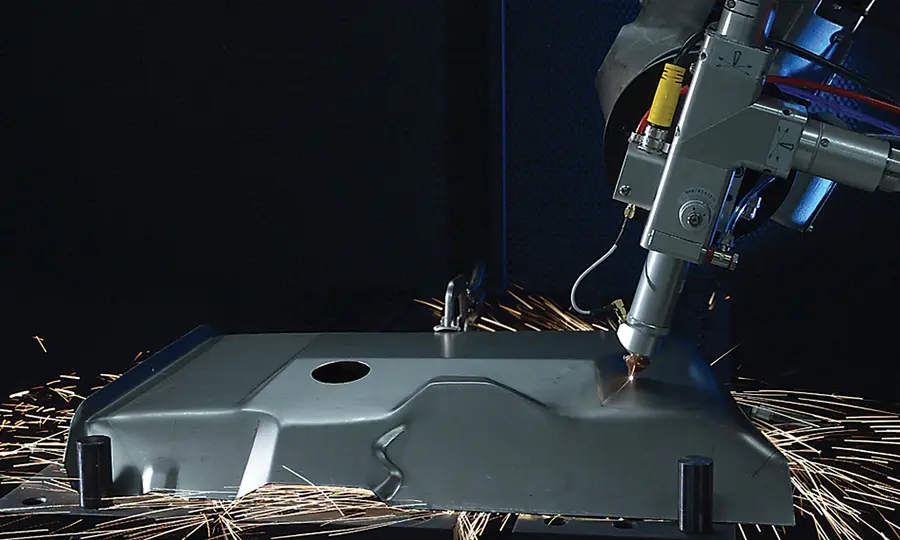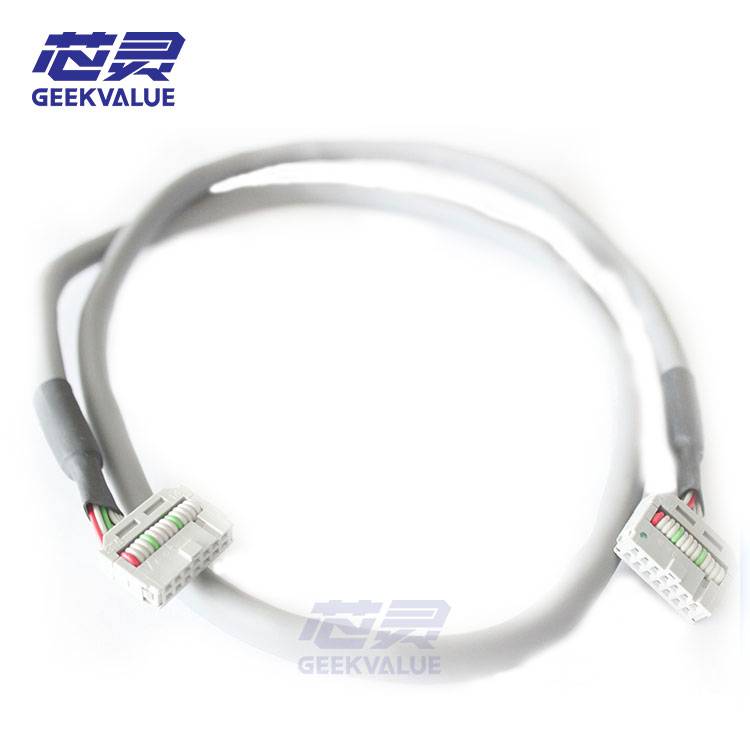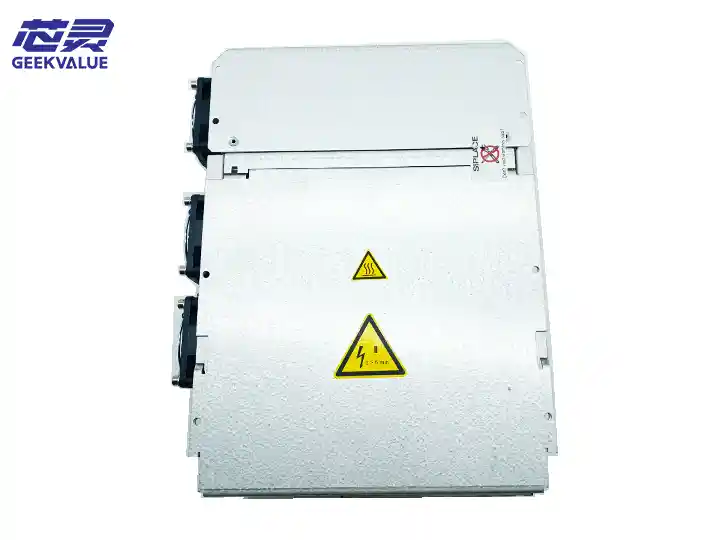ASM SMT machine 12MM with sensor feeder (model: 00141391) is a high-precision feeding device designed for SMT production lines, suitable for 12mm wide roll component tape. The feeder integrates advanced sensing technology to ensure the stability and accuracy of component supply, and is an indispensable key accessory in modern electronic manufacturing.
2. Product advantages
High-precision feeding: adopts precision mechanical structure design to ensure accurate feeding step each time, and the error is controlled within ±0.05mm
Intelligent sensing system: built-in high-sensitivity sensor, real-time Monitoring of tape status and component position
Wide compatibility: adapt to a variety of ASM series SMT machines, such as ASM SIPLACE X series, D series, etc.
Strong durability: key components are made of wear-resistant alloy materials, with a service life of more than 5 million times
Quick material change design: humanized material belt fixing mechanism, shortening the downtime of material change
Energy saving and environmental protection: low power consumption design, more than 30% energy saving compared with traditional feeder
III. Technical features
Mechanical structure features
Compact design, size is 150mm×45mm×60mm
Dual guide rail feeding mechanism to ensure smooth operation of the material belt
Precision gear transmission system, transmission ratio 16:1
Adjustable material pressing device, suitable for different thickness of material belt
Electronic system features
Use Hall effect sensor, non-contact detection
Response time <1ms
Working voltage 24VDC±10%
Protection level IP54, anti-electromagnetic interference
IV. Working principle
Power transmission: The main control system of the SMT machine drives the stepper motor inside the flyer through an electrical signal
Material tape advancement: The motor drives the feeding ratchet through the gear set, and advances a material level each time it rotates a fixed angle (usually 7.5°)
Position detection: The sensor monitors the hole position of the material tape in real time to confirm the feeding status
Feedback control: Feedback the detection signal to the SMT machine control system to form a closed-loop control
Component exposure: When the material tape advances to the specified position, the stripping knife slightly lifts the cover tape to make the component in a visible position Suction status
V. Core functions
Precise feeding: Stable delivery of components according to the program-set step distance
Lack of material alarm: Early warning when the material belt is about to run out
Material belt status monitoring: Detect whether the material belt is stuck, twisted or broken
Component presence detection: Confirm whether there are components at each material position
Automatic correction: Automatic compensation for slight feeding deviations
Data recording: Record operating data such as feeding times and alarm information
VI. Precautions for use
Installation specifications
Ensure that the feeder and the placement machine interface are completely matched before tightening the fixing screws
Check whether the electrical connector is plugged in place to avoid virtual connection
Material belt loading
Check whether the material belt has Deformation or damage
Ensure that the material belt is straight and not twisted in the guide rail
Correctly set the position of the material belt width adjustment lever
Parameter setting
Correctly set the feeding step distance according to the component specifications (usually 4mm or 2mm)
Set the appropriate feeding force to avoid being too tight or too loose
Daily operation
Avoid forced manual intervention when the feeder is running
Regularly clean the dust and debris on the material belt path
Perform the "feed reset" operation first when changing the material belt
Environmental requirements
Working temperature 10-40℃, humidity 30-70%RH
Avoid using in dusty, oily or strong electromagnetic interference environments
VII. Common error messages and solutions
Error code Error description Possible cause Solution
E001 Feeding timeout 1. The material belt is stuck
2. Motor failure
3. Sensor failure 1. Check the material belt path
2. Test the motor power supply
3. Clean or replace the sensor
E002 No material alarm 1. The material belt is used up
2. Sensor misjudgment
3. The signal line is loose 1. Replace the new material belt
2. Adjust the sensor sensitivity
3. Check the connection line
E003 Feeding is not in place 1. Step setting error
2. Mechanical resistance is too large
3. Insufficient drive voltage 1. Check program parameters
2. Lubricate the guide rail
3. Check the power output
E004 Sensor failure 1. Sensor contamination
2. Circuit board damage
3. Signal interference 1. Clean the sensor window
2. Check the PCB
3. Install shielding
E005 Temperature is too high 1. Continuous overload
2. Poor heat dissipation
3. Ambient temperature is high 1. Stop cooling
2. Clean the heat dissipation holes
8. Maintenance methods
Daily maintenance
Cleaning
Wipe the surface of the feeder with a dust-free cloth every day
Remove internal dust with an air gun (pressure <0.3MPa)
Clean the sensor window with an alcohol swab
Lubrication and maintenance
Add special grease (such as Kluber Isoflex NBU15) to the guide rail and gear parts every week
Check the wear of the feed ratchet every month
Tightening inspection
Regularly check whether all fixing screws are loose
Confirm that all connectors have good contact
Regular maintenance (every 3 months or 500,000 feeds)
Disassemble and clean the internal mechanism
Replace worn feed ratchet and pressure spring
Calibrate sensor detection position
Measure motor current to determine carbon brush wear
Comprehensively check circuit board connections and component status
9. Maintenance ideas
Fault diagnosis process
Observe phenomena: record all alarm information and abnormal performance
Preliminary inspection: obvious problems such as power supply, connecting wires, mechanical jamming, etc.
Function test: test each subsystem such as feeding and sensing separately
Parameter analysis: check Find patterns in historical operation data
Replacement test: cross-verify with known good parts
Common fault handling
Inaccurate feeding: check stepper motor driver, gear gap, material belt tension
False alarm: adjust sensor threshold, check anti-interference measures
Abnormal sound: check bearing wear, poor gear meshing or foreign matter
No action at all: measure power supply voltage, check fuse and main control signal
Key points for in-depth maintenance
Motor maintenance: replace carbon brushes, detect winding impedance (normal value is about 5-10Ω)
Circuit board maintenance: focus on checking power filter capacitor and signal amplifier IC
Mechanical accuracy recovery: use dial indicator to calibrate feeding position accuracy
X. Technical parameter summary
Parameter category Specific indicators
Applicable strip width 12mm (adaptable to 8-12mm)
Feeding accuracy ±0.05mm
Maximum feeding speed 30 times/second
Strip spacing 2/4/8mm optional
Component height ≤6mm
Working voltage 24VDC±10%
Power consumption ≤15W
Weight About 0.8kg
Service life ≥5 million times
Conclusion
ASM 12MM sensor feeder 00141391 has become a key equipment on the SMT production line with its high precision, high reliability and intelligent characteristics. Correct use and standardized maintenance can not only extend the life of the equipment, but also ensure the stability of production quality. When complex faults occur, it is recommended to contact ASM authorized service providers for professional repairs to avoid secondary damage caused by improper disassembly. With the development of Industry 4.0, the future feeder will develop in a smarter and more adaptive direction, integrating more IoT functions and predictive maintenance capabilities.
